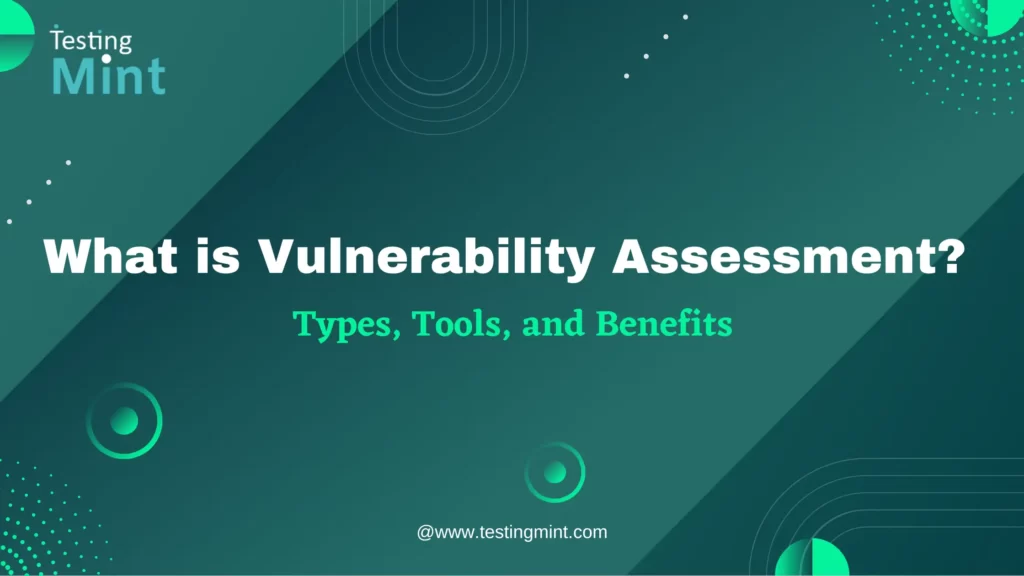Hello and welcome to my blog on vulnerability assessment! In today’s world, where technology is advancing at an exponential rate, ensuring the security of our devices and networks has become more crucial than ever. Hackers and cybercriminals are always on the lookout for vulnerabilities in our systems that they can exploit for their gain. This is where vulnerability assessment comes into play.
What is Vulnerability Assessment?
Vulnerability assessment can be defined as the process of identifying weaknesses in a system, application, or network that can be exploited by an attacker. By performing regular vulnerability assessments, organizations can proactively identify and remediate vulnerabilities before they are exploited by an attacker.
Let me give you a real-world example to better understand the importance of vulnerability assessment. Suppose you have a house with a fence around it. You feel safe and secure as you think the fence is strong and sturdy enough to keep burglars out. However, a skilled thief can easily find a weakness in the fence and use it to gain entry to your house. In the same way, a network or an application may seem secure, but there could be vulnerabilities that an attacker can exploit to gain unauthorized access.
Types of Vulnerability Assessment
There are mainly three types of vulnerability assessment: network vulnerability assessment, application vulnerability assessment, and physical vulnerability assessment. Let’s take a closer look at each of them:
1. Network Vulnerability Assessment
Network vulnerability assessment involves scanning and analyzing the network for vulnerabilities. This includes identifying weaknesses in network devices, such as routers and switches, and detecting open ports and services that could be exploited by an attacker.
For example, imagine you have a company with multiple branch locations. Each branch location has a network with multiple devices, such as routers, switches, and servers. By conducting a network vulnerability assessment, you can identify vulnerabilities in these devices and ensure that they are secure.
2. Application Vulnerability Assessment
Application vulnerability assessment involves scanning and analyzing an application for vulnerabilities. This includes identifying security flaws in the application’s code, configuration, and architecture that could be exploited by an attacker.
For example, suppose you have a website that allows users to enter their personal information. By conducting an application vulnerability assessment, you can identify vulnerabilities in the website’s code, such as SQL injection and cross-site scripting (XSS) attacks, and ensure that user data is secure.
3. Physical Vulnerability Assessment
Physical vulnerability assessment involves identifying weaknesses in physical security measures, such as locks, alarms, and surveillance systems. This includes identifying vulnerabilities in access control systems, fire suppression systems, and other physical security measures that could be exploited by an attacker.
For example, imagine you have a data center that houses critical business information. By conducting a physical vulnerability assessment, you can identify vulnerabilities in the data center’s physical security measures, such as doors that are easily bypassed, and ensure that the data center is secure.
Steps in Conducting Vulnerability Assessment
Following are the steps involved in conducting a vulnerability assessment:
1. Preparation
Before conducting a vulnerability assessment, it’s important to ensure that you have a clear understanding of what you’re assessing and why. This includes identifying the scope of the assessment, the assets you’ll be assessing, and the types of vulnerabilities you’ll be looking for.
2. Identification
The next step is to identify vulnerabilities in the system, application, or network you’re assessing. This involves using vulnerability scanning tools to identify weaknesses, such as open ports, missing patches, and outdated software.
3. Assessment
Once vulnerabilities have been identified, the next step is to assess their severity and potential impact on the system, application, or network. This involves prioritizing vulnerabilities based on their severity and potential impact and determining which vulnerabilities need to be addressed first.
4. Analysis
The next step is to analyze the vulnerabilities that have been identified and determine how they can be remediated. This may involve patching software, reconfiguring systems, or implementing new security measures.
5. Remediation
The final step is to remediate the vulnerabilities that have been identified. This involves implementing the necessary changes to the system, application, or network to address the identified vulnerabilities.
Benefits of Vulnerability Assessment
Here are some of the main benefits of vulnerability assessment:
1. Identify Security Risks
Vulnerability assessment helps organizations identify security risks and vulnerabilities in their systems and networks. This can help them to prioritize their security efforts and focus on the most critical vulnerabilities.
2. Protect Sensitive Data
Vulnerability assessment can help organizations protect their sensitive data from theft or unauthorized access. By identifying vulnerabilities that could be exploited to gain access to sensitive data, organizations can take steps to mitigate those vulnerabilities and protect their data.
3. Comply with Regulations
Many industries are subject to regulatory requirements for cybersecurity, such as HIPAA, PCI-DSS, or GDPR. Vulnerability assessment can help organizations comply with these regulations by identifying vulnerabilities and taking steps to mitigate them.
4. Prevent Cyber Attacks
Vulnerability assessment can help organizations prevent cyber attacks by identifying vulnerabilities that could be exploited by attackers. By addressing these vulnerabilities, organizations can reduce the risk of a successful attack.
5. Reduce Costs
By identifying vulnerabilities before they are exploited, organizations can reduce the costs associated with data breaches, such as legal fees, fines, and lost revenue. Additionally, vulnerability assessment can help organizations prioritize their security efforts, which can lead to more efficient use of resources and lower costs overall.
Vulnerability Assessment Tools
There are many tools available to help organizations conduct vulnerability assessments. These tools can be broadly categorized into two categories:
1. Open-source Tools
Open-source vulnerability assessment tools are freely available and can be downloaded and used without cost. Following are some of the popular Open-source Tools for Vulnerability Assessment:
- OpenVAS:
A powerful vulnerability scanning and management tool that can detect thousands of vulnerabilities in various types of systems and applications. - Nikto:
A web server scanner that checks for common vulnerabilities and misconfigurations in web servers and applications. - Nmap:
A network exploration and security auditing tool that can detect open ports, running services, and potential vulnerabilities in networked systems. - Metasploit:
A penetration testing framework that includes a vulnerability scanner and exploit development tools. - OSSEC:
A host-based intrusion detection system that can detect and alert on security events, including vulnerability exploits. - Wireshark:
A network protocol analyzer that can capture and analyze network traffic to detect potential security threats and vulnerabilities. - Snort:
A network intrusion detection and prevention system that can detect and block known vulnerabilities and exploits in real-time. - Skipfish:
A web application security scanner that can detect common vulnerabilities and misconfigurations in web applications. - W3af:
A web application attack and audit framework that can detect and exploit vulnerabilities in web applications. - ZAP:
A web application security scanner and attack proxy that can detect and exploit vulnerabilities in web applications.
2. Commercial Tools
Commercial vulnerability assessment tools are typically more comprehensive and offer more features than open-source tools. Following are some of the popular Commercial Tools for Vulnerability Assessment:
- Nessus:
A widely used vulnerability scanner that can detect and report on vulnerabilities in various types of systems and applications. - Qualys:
A cloud-based vulnerability management platform that provides continuous monitoring, detection, and remediation of vulnerabilities. - Rapid7:
A suite of security solutions that includes vulnerability management, penetration testing, and incident detection and response. - Tenable:
A vulnerability management platform that provides comprehensive scanning and reporting of vulnerabilities in IT assets. - McAfee Vulnerability Manager:
A vulnerability management solution that offers vulnerability scanning, patch management, and compliance reporting. - Acunetix:
A web application security scanner that can detect and report on vulnerabilities in web applications. - BeyondTrust Retina:
A vulnerability assessment and management tool that provides comprehensive scanning and reporting of vulnerabilities in IT assets. - IBM Security AppScan:
A web application security testing tool that can detect and report on vulnerabilities in web applications. - F-Secure Radar:
A vulnerability management platform that offers comprehensive scanning and reporting of vulnerabilities in IT assets. - RapidFire Tools Network Detective:
A network and security assessment tool that provides vulnerability scanning and reporting of vulnerabilities in networked systems.
Challenges of Vulnerability Assessment
There are several challenges that organizations may encounter when performing vulnerability assessments. Here are some of the main challenges:
1. False Positives and False Negatives
Vulnerability assessment tools may generate false positives or false negatives, which can lead to wasted time and resources or missed security risks. For example, a vulnerability assessment tool may report a vulnerability that is not actually present or may miss a vulnerability that is present.
2. Complexity of Systems and Networks
Today’s systems and networks are complex and diverse, with multiple types of devices, operating systems, and applications. This can make it difficult to identify and assess all vulnerabilities across the entire network.
3. Patching and Remediation
Once vulnerabilities have been identified, organizations must prioritize and address them in a timely manner. This can be a challenge, particularly when there are multiple vulnerabilities to address and limited resources to perform the necessary patching and remediation.
4. Lack of Visibility
Organizations may lack visibility into their systems and networks, particularly when there are shadow IT systems or devices that are not part of the standard IT infrastructure. This can make it difficult to identify and assess all vulnerabilities.
5. Lack of Skills and Resources
Vulnerability assessment requires specialized skills and tools, which may not be readily available within an organization. Additionally, vulnerability assessment requires time and resources, which can be a challenge for smaller organizations with limited budgets.
6. Evolving Threat Landscape
The threat landscape is constantly evolving, with new vulnerabilities and attack techniques emerging all the time. This can make it challenging to keep up with the latest threats and vulnerabilities and to ensure that vulnerability assessments are up to date and effective.
Best Practices in Conducting Vulnerability Assessment
To ensure that a vulnerability assessment is effective, it’s important to follow best practices. Some best practices include:
1. Regular Vulnerability Assessments
Regular vulnerability assessments should be conducted to identify new vulnerabilities that may have arisen due to changes in the system, application, or network. This includes conducting vulnerability assessments after any major changes, such as software updates or new network devices.
2. Follow-up on Identified Vulnerabilities
Once vulnerabilities have been identified, it’s important to follow up and ensure that they have been remediated. This includes regularly checking to ensure that patches have been applied, configurations have been updated, and new security measures have been implemented.
3. Keep Up-to-date with New Threats
Cyber threats are constantly evolving, and it’s important to stay up-to-date with new threats and vulnerabilities. This includes keeping up-to-date with new software updates, patches, and security measures.
4. Document the Assessment
It’s important to document the vulnerability assessment, including the identified vulnerabilities, their severity, and the steps taken to remediate them. This documentation can be used to demonstrate compliance with security regulations and to show the effectiveness of the vulnerability assessment program.
Conclusion
In conclusion, vulnerability assessment is a critical process that organizations should conduct regularly to identify and remediate vulnerabilities in their systems, applications, and networks. By following best practices and using the right tools, organizations can ensure that they are proactively identifying and addressing vulnerabilities and staying ahead of cyber threats. Remember, it’s always better to be safe than sorry when it comes to cybersecurity!

